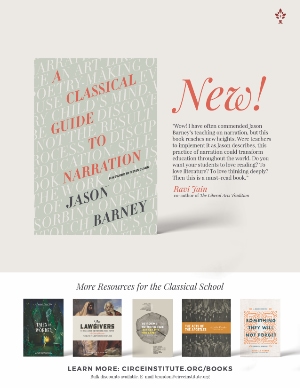By Hannah Grieser
The Christian calendar has a wonderful way of focusing our attention on the rich truths of our faith. Through various family and church traditions, even our youngest children can start to experience the goodness of these truths in tangible ways.
Our kids may not fully grasp the significance of the incarnation, but they can hear the notes of longing in the songs of Advent. They can smell Christmas cookies in the oven, affirming the goodness of the Word made flesh. They can see the twinkle lights that recall the true Light that came to us in our darkness.
And now at this time of year, as the days are growing longer (the word “Lent” originally meant the “lengthening” days of spring), we turn our focus toward the sufferings of Jesus, His death on the cross and, above all, His triumphant resurrection.
Surely these are events to remember with our children! But if you’re at all like me, you may find Good Friday and Easter traditions less plentiful than the ones surrounding Advent and Christmas. Few schools cancel classes for Holy Week. There are no radio stations switching over to 24-7 Easter music. But that doesn’t mean we can’t find ways to attach rich family traditions to these pivotal days in the Christian faith. We just have to get a bit more creative.
MUSIC THAT TELLS A STORY
In addition to attending a Good Friday worship service, one way our family has begun commemorating the day is by watching a full-length performance of Saint Matthew Passion or Saint John Passion by J.S. Bach (who has been nicknamed “the fifth evangelist”).
Younger children may not be able to sit still through the whole thing, but older kids and teenagers certainly can. Not only has this helped our kids get familiar with two of the greatest works of Christian music ever written, it also provides an extended meditation on the story of the crucifixion. The words are in German, but both are available online with English subtitles.
BACH FOR GOOD FRIDAY
Look for these two performances with English subtitles on YouTube:
Saint John Passion
performed by Bach Collegium Japan and directed by Masaaki Suzuki—who is a believer
You might start with this version.
Saint Matthew Passion
performed by Collegium Vocale Gent, directed by Philipp Herreweghe
RESURRECTION ROLLS
Another tradition that has helped make our Good Friday and Easter special is baking “resurrection rolls.” We deliver plates of them to our neighbors on the afternoon of Good Friday, which provides an opportunity to invite them to church for Easter Sunday.
The rolls are made with a traditional hot cross bun dough (mine comes from The Joy of Cooking)) but with a surprise: the dough is wrapped around a marshmallow, which melts during baking and leaves a hollow center—the “empty tomb”—full of sweet goodness. The raisins in a hot cross bun are said to represent the stain of sin; the icing cross recalls the cross of Christ, and the empty tomb reminds us of the glorious truth of Easter morning—that Christ has conquered death.
Like most holiday traditions, this simple activity helps to reinforce big truths. Our kids can hardly imagine an Easter celebration without them. Oh, and they are delicious—especially when warm.
RECIPE
Hot cross buns with a hollow “empty tomb” center
Makes 12-18 rolls.
Soak:
-
- ½ c Zante currants (or raisins) in ½ c boiling water
- Let sit off heat until plump, 30 min to an hour. Drain and set aside.
Combine:
-
- 1 package (2 ¼ t yeast)
- ⅓ c white sugar
- ¾ c warm milk
- ¾ c warm water
- 1 c all purpose flour
- Mix until sugar dissolves. Let sit about 5-10 minutes or until starting to foam
Add:
- ⅓ c soft butter
- 1 large egg
- 1 ½ T kosher salt
- 1 t cinnamon
- ½ t ground nutmeg
- ½ t ground ginger
- 3 additional cups all purpose flour
- Mix thoroughly. Knead until elastic.
- Add currants, and knead a couple more times until well incorporated.
- Form dough into a ball. Cover, and let rise until double, about an hour.
- Punch down, and divide into balls about 2 ½ inches in diameter. Flatten each ball into a disk.
- Place in the center of each disk 1 whole marshmallow (not miniature).
- Wrap dough tightly around marshmallow and seal well, using wet fingers if necessary.
- Line a rimmed baking sheet with parchment paper. (The rim and the parchment are both 100% necessary. Trust me. No really, trust me.)
- Place rolls on parchment, about 2 in. apart and cover with a lint-free towel. Let rise for another 20 min.
- Brush tops of rolls with 1 beaten egg.
- Bake at 400° F for 15 minutes.
- Remove from oven and cool.
You’ll notice that, despite your best efforts to seal the marshmallow inside the dough, the marshmallows have broken through the sides and oozed all over your pan. Embrace the sticky mess.
When cool, peel the sticky rolls off the parchment and line them up next to each other in neat little rows.
For icing, mix thoroughly:
½ lb powdered sugar
A few T milk or lemon juice or both
1 t vanilla
Icing should be a smooth, spreadable consistency. (Like creamy peanut butter on a warm day.)
Use a piping bag to ice the rolls in the shape of a cross. This is easiest if they’re lined up in rows, so you can ice them in straight lines across multiple rolls at once.
If you don’t have a piping bag, just fill a ziploc with icing, cut off one corner, seal the bag, and squeeze the icing gently across the rolls from the cut corner.
Let the icing set completely before covering. Or skip the wait and just eat them while they’re fresh! When you bite into them you’ll discover that where the marshmallow once was is the sweet and sticky hollow center—the empty tomb!












